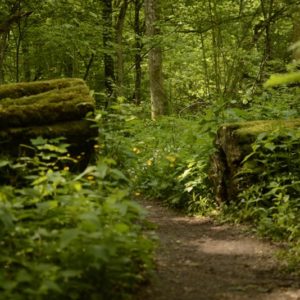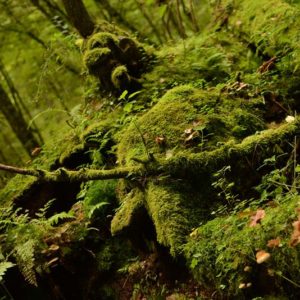Considering the time of natural resources conservation in form of a national park, two areas can be distinguished within today’s conservation sub-district Rezerwat:
- the oldest part of the Park - former strict natural reserve – located south of Hwoźna river and east of Narewka river;
- the youngest part of the Park - former conservation sub-district “Hwoźna” – added to the Park in 1996, located north of the Hwoźna river and west of the Narewka river;
SOUTH-EASTERN PART OF THE CONSERVATION SUB-DISTRICT REZERWAT
The oldest part of the Park (former strict natural reserve)
The most valuable natural resource of the Białowieża National Park. Part of this area was included in the forest unit “Rezerwat” established in 1921, which was a core of the Park. All natural resources are protected here: soil, hydrographic conditions, plants, animals, fungi, landscape, and remains of the past human activities (e.g., mounds, bee-hive trees, charcoal piles). This area is covered by a natural forest, not planted by and growing without human interventions. It consists of many tree species, and trees of various age. Here all phases of the tree life can be observed: from a seedling to dead trees. Large quantities of dead wood: standing dry trunks, windsnaps, and blowdowns, are noted by visitors. This wood is a habitat for the rarest species of fungi (e.g., Fomitopsis rosea and Hericium coralloides) and animals (e.g., beetles – Goldstreifiger and Pytho kolwensis, or ornithological gems, three-toed woodpecker and white-backed woodpecker). Many species found in this region are relics of primary forests.
Practical information: individual tourists and groups can visit the area under strict protection by following an unmarked trail “To the Jagiełło Oak” (7 km long, including 4 km in the former strict nature reserve, duration 3 hours) only with a tourist guide holding a licence issued by the Director of the Białowieża National Park. The guide can lead a team of maximum 20 people (including guardians of children and youth groups) The guide can be hired at tourist agencies licensed by the Park.
NORTH-WESTERN PART OF THE CONSERVATION SUB-DISTRICT REZERWAT
The youngest part of the sub-district (former conservation sub-district Hwoźna)
This part of the Park is the forest taken over from the State Forests in 1996, when Białowieża National Park was expanded. In some areas the forest maintained its natural character.
This concerns, in particular, forest areas in wilderness Głuszec (Grouse) and Wilczy Szlak (Wolf Trail). Since 1979, these wilderness areas were protected as partial nature reserves, and now they are within the Park, following its expansion. Forests located at Hwoźna and Narewka rivers also maintained their natural character.
This part of Białowieża National Park is available to walking and cycling tourists, and to skiers in winter. Over 25 km of footpaths and 14 km of cycling trails crosses the most interesting fragments of this part of the Park. Numerous facilities, such as wooden gangways, viewing points and information boards help the visitors to move around the forest and learn about the nature.
Practical information: individual tourists can travel in the northern part of Białowieża National Park without a guide. Organised groups of more than 10 people must have a guide licensed by Białowieża National Park. This part of the Park is located about 21 km away from
Białowieża and 5 km from Narewka. It can be accessed by three main roads:
- from Narewka – by walking or driving along Droga Narewkowska to a depot before Kosy Most;
- from Zamosze settlement (1 km from Stare Masiewo village);
- from Stare Masiewo village.
There is a car park, a shelter and an information board with a map at each of these locations.


 Back
Back

